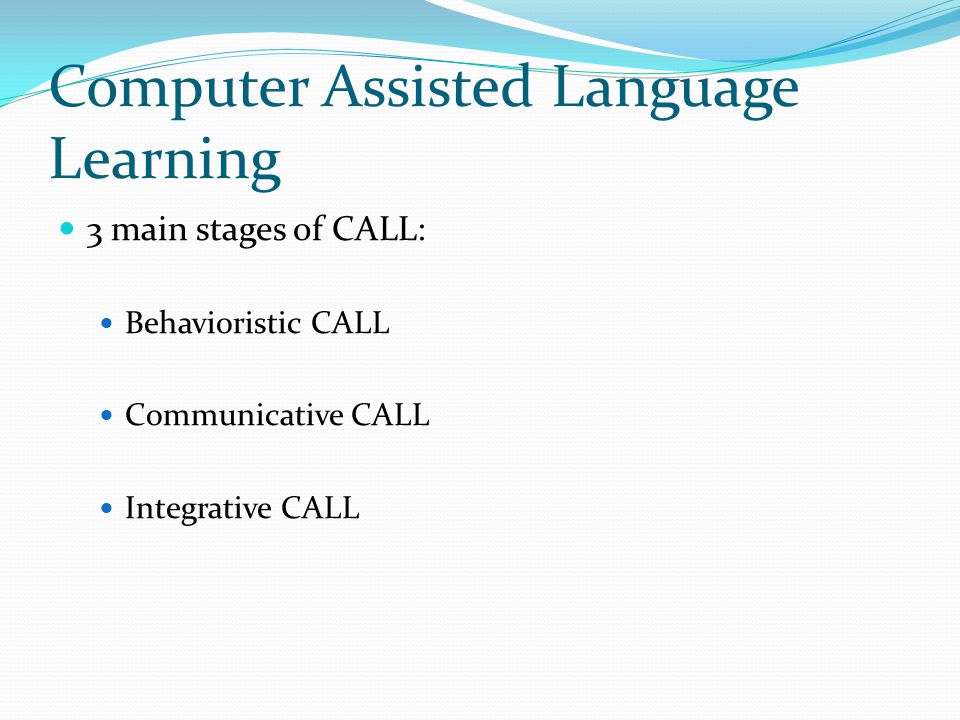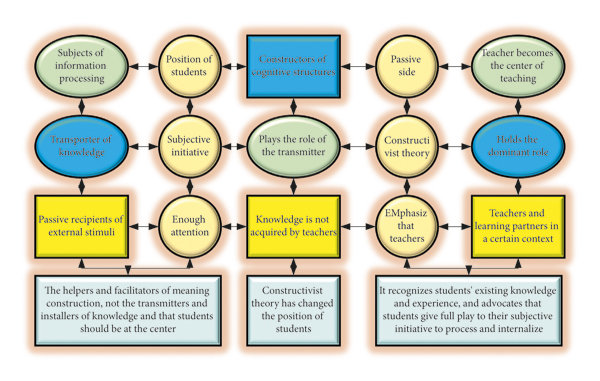Technology transforms virtually all human pursuits. In education, the Use of audiovisual aids, computers, and telecommunication devices has radically altered classroom dynamics. For ESL and TEFL practitioners, the possibilities being opened up by technology are highly promising, with the currently accepted practices already demonstrating the huge benefits technology offers to both students and educators. Computer-Assisted Language Learning (CALL) is a growing sector and advocacy in the language instruction area with huge potential to make the learning of a second or foreign language easier and more accessible.

The impact of technology on all levels of academic instruction cannot be overstated. For the most part, educators agree that technology enriches the learning experience in many ways. For example, watching relevant video clips certainly enhances how students develop an appreciation of nature and its processes. Research work also becomes much easier using an online computer. In the ESL and EFL sectors, the advances in software development and the channels through which multimedia instructional content can be delivered have already reached the point that ignoring CALL in instructional strategy is almost unthinkable. Serious language educators who wish to be effective, updated, and creative practitioners should integrate CALL into their lesson plans.
READ MORE :
Various studies already affirm the positive impact of technology on student’s ability to think, articulate, and create ideas using words expressed verbally or in writing. There are already dozens of computer software, for example, designed to allow young learners to develop their own stories even before they undergo formal language training. Word processors are not just great tools for doing homework; they are also instrumental in helping students grasp English syntax through built-in dictionaries and spell and grammar checkers.

Definition and History of CALL
Broadly defined, CALL refers to approaches in language teaching and learning that use computers to aid one or more aspects of the learning engagement. These aspects include how instructional materials are presented, how students engage with the instructional content, and how their understanding of the lesson concepts is assessed. Thus, PowerPoint presentations, video conferencing, interactive language games, and computerized assessment exams all fall under the classification of computer-assisted language learning.
The Use of computers in language instruction can be traced to as early as the 1960s, wherein programs lodged in mainframe computers were used in universities as teaching aids. One example is the PLATO project at the University of Illinois, which offered several coursework from elementary to university levels. When the personal computer was introduced in the late 1970s, CALL programs were developed and marketed more aggressively. Since then, CALL has evolved into a formidable tool for instructing language learners and one that should never be barred from a language classroom.
Benefits of CALL
Early studies on technology-enhanced instruction already indicated strong evidence of the positive impact of technology on education. According to these studies, technology-enriched classrooms exhibit impressive learning outcomes, including higher test scores, improved learner attitudes, more heightened interest in the subject matter, and deeper engagement.
Two such studies are particularly notable. The Department of Education directly funded one, while the other is a 10-year program called ACOT (Apple Classrooms of Tomorrow) initiated by Apple. The first study concluded that the effective Use of technology translated to improved gains for all students regardless of demographics: parental income, gender, age, and other criteria. Meanwhile, the second study reported that students immersed in technology-enhanced environments not only performed consistently well but also learned other competencies that were rarely measured before. These include behavioral modifications wherein students are encouraged to explore their environment more. Students under the program also became socially aware, self-starters, and independent learners. They were also able to communicate more effectively and generally developed more confidence in their abilities.
When properly deployed, CALL delivers huge benefits that ESL and TEFL educators cannot choose to ignore:
· CALL has a significant positive effect on learning achievement.
· Interactive videos are effective tools when lesson concepts have strong visual elements.
· Online collaborative interfaces have been shown to improve students’ academic skills and self-esteem.
· Use of computer-based instruction can result in positive attitudinal changes–particularly those relating to self-confidence, learning motivation, and how lessons are received. When students are allowed to manage their own learning pace, the effects are greater.
· CALL transforms the learning environment into a student-centric engagement.
· CALL encourages cooperative learning and dramatically improves student-teacher interactions.
· CALL provides avenues for passive and underachieving students to perform, communicate, and participate better.
Barriers to the Use of CALL
While the advantages of integrating CALL in the overall language teaching strategy are well-documented, barriers prevent many educators from fully embracing the benefits of CALL. In a study conducted at the University of Taiwan, these barriers were itemized as follows:
1. Financial Barriers. The cost of computers, online connectivity, software, and technical support can be prohibitive, especially in economically less advanced locations.
2. Availability of Relevant and Applicable Software. High-quality software that applies to the language classroom’s socio-cultural context may sometimes be difficult.
3. Technical Proficiencies of Teachers and Learners. There are cases wherein the learning curve required of teachers and students to develop adequate proficiency in new technology may prevent full integration.
4. Hesitation in Accepting New Technology. Similarly, some cultures take longer to accept novelty than others.
Notwithstanding the barriers, the future is still very bright for computer-assisted learning simply because it has been consistently demonstrated to work extremely well. Also, many of the obstacles will eventually be addressed even in the short term (the prices of computer hardware and software are generally going down, and computer interfaces are rapidly becoming so intuitive that people hardly need a technical background to operate touchscreen phones, notebooks, and computers, etc.).
Conclusion
CALL is arguably the most formidable instructional aid ESL/EFL educators can integrate into their learner engagement strategies. Currently, the range of available online applications that ESL/EFL educators can use in their classrooms is far-ranging. There are dictionaries, encyclopedias, language translators, resource links, forums, chat rooms, digital pronunciation tutors, quizzes, videos, music, and games. Aligning lessons to integrate some of these aids will enrich the experience of both students and language teachers.

